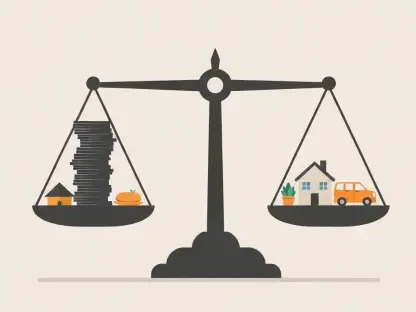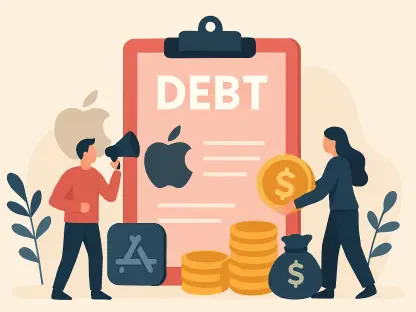Open banking is rapidly transforming the financial industry, ushering in an era where consumer data control and collaborative innovation take center stage. By enabling secure data exchanges and fostering a transparent ecosystem, open banking promises to revolutionize how consumers interact with financial services. The concept of open banking primarily revolves around the notion that consumers should have full control over their financial data, allowing them to share this information securely with third-party providers to receive more personalized services and financial tools. This shift empowers consumers with the capability to make more informed financial decisions and take advantage of innovative services that were previously out of reach.
The Role of APIs in Open Banking
Application Programming Interfaces (APIs) serve as the backbone of open banking, facilitating seamless, secure, and efficient data exchange between banks and third-party providers. By design, these APIs incorporate robust security measures such as encryption and multi-factor authentication (MFA) protocols to ensure that sensitive financial data remains protected from unauthorized access. The use of APIs ensures that banks do not expose their internal systems to potential vulnerabilities, thereby acting as secure gateways through which only authorized third parties can access with the proper user permissions.
This architecture greatly enhances scalability and interoperability within the financial ecosystem. APIs allow third-party providers to develop innovative financial tools and services tailored to user needs, creating an environment where consumers benefit from a wider range of personalized services. The ripple effect of this innovation is evident in better financial management tools that assist consumers in budgeting, saving, and investment, leading to more informed financial decisions. As a result, open banking does not merely transform how data is shared but fundamentally enhances the quality and specificity of financial services available to consumers.
Customer Consent and Authorization
One of the cornerstones of open banking is the requirement for explicit customer consent before any data sharing occurs, ensuring that control remains firmly in the hands of the consumer. This consent process involves multi-factor authentication (MFA) and strong customer authentication (SCA) protocols that are primarily managed by banks. When consumers decide to share their data with third parties, they can specify the extent and duration of the data sharing, retaining full control over their personal information throughout the process.
This user-centric model promotes transparency and builds trust between consumers, banks, and third-party providers. Consumers also hold the right to revoke their consent at any time, thereby halting any further data sharing instantaneously. This additional layer of security and empowerment reassures users that their data will only be shared under their explicit permission and control. It highlights a significant shift toward a more transparent and responsible financial ecosystem, aligning the interests of all stakeholders while prioritizing consumer autonomy and data privacy.
Third-Party Providers: AISPs, PISPs, and CBPIIs
Open banking categorizes third-party providers (TPPs) based on the services they offer to consumers, namely Account Information Service Providers (AISPs), Payment Initiation Service Providers (PISPs), and Card-Based Payment Instrument Issuers (CBPIIs). AISPs aggregate and analyze financial data from multiple bank accounts, providing consumers with comprehensive insights that aid in better financial management. These providers offer tools for budgeting, saving, and investment advice without the need to transfer any funds themselves, thereby acting as pure data analytics and advisory platforms.
PISPs, on the other hand, facilitate direct payments from consumers’ bank accounts, reducing reliance on traditional payment methods like credit or debit cards. By streamlining transactions, PISPs make them quicker and often more cost-effective, benefiting consumers directly. Additionally, CBPIIs enable the usage of payment cards directly linked to bank accounts, offering greater flexibility and convenience. These cards can be seamlessly integrated into both physical and digital transactions, further enriching the consumer’s financial toolkit and providing a more cohesive and fluid banking experience.
Data Flow and Security Measures
Secure data exchange processes are fundamental to maintaining consumer trust in open banking, ensuring the integrity and confidentiality of shared information. Data flows between banks and third-party providers (TPPs) are encrypted and safeguarded by high-level security protocols aimed at preventing unauthorized access and potential data breaches. Multi-factor authentication (MFA) is typically required from users to approve any data sharing or payment activities, adding another layer of security to the process.
Additionally, TPPs are only granted access to the specific data necessary for the services they provide, significantly minimizing exposure and potential risks. Regulatory frameworks are pivotal in this ecosystem, enforcing strict compliance with data protection standards such as the General Data Protection Regulation (GDPR) and other local mandates. These frameworks ensure real-time monitoring and oversight mechanisms are in place to detect and deter security threats, which upholds the ongoing integrity and trustworthiness of the open banking environment. Such rigorous security measures confirm that user data is handled with the highest level of care, preserving consumer faith in the system.
Consumer Empowerment and Benefits
Open banking significantly enhances consumer empowerment by giving individuals unprecedented control over their financial data and access to a plethora of personalized financial tools and services. This shift allows consumers to make better-informed decisions regarding their financial health and future. Through services offered by AISPs, PISPs, and CBPIIs, consumers gain insights that were previously inaccessible, enabling them to manage their finances more effectively and strategically.
The open banking model fosters a competitive financial landscape where innovation is not just encouraged but essential. By allowing various third-party providers to enter the market, consumers benefit from a broader selection of services that cater specifically to their needs. Moreover, the transparency and security embedded in the open banking framework reassure consumers that their data is handled securely, building a foundation of trust and confidence. This newfound trust encourages consumers to actively engage with available financial services, further optimizing their financial well-being.
Innovation and Competition in Financial Services
Open banking is swiftly revolutionizing the financial sector, placing consumer data control and collaborative innovation at the forefront. By facilitating secure data exchanges and promoting a transparent financial ecosystem, open banking is set to change the way consumers engage with financial services. At its core, open banking is built on the principle that consumers should maintain full control over their financial data, enabling them to share this information securely with third-party providers. This allows consumers to access more personalized services and advanced financial tools. By handing the reins to consumers, open banking empowers them to make more informed financial choices, leveraging innovative services that were once out of reach. This transformation not only enhances consumer autonomy but also encourages a more competitive financial market where different providers can offer tailored solutions to meet individual needs. Open banking represents a significant step forward in creating a more inclusive and dynamic financial landscape, where consumers have the upper hand in managing their financial future.









